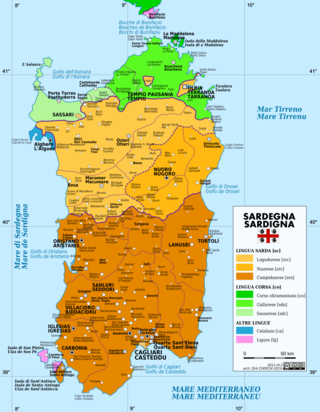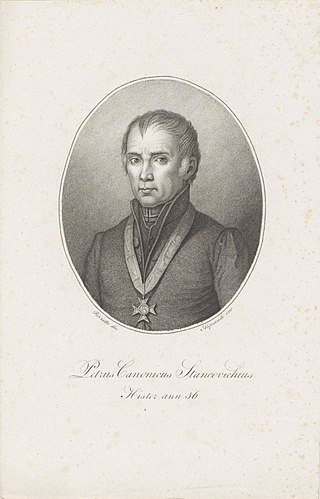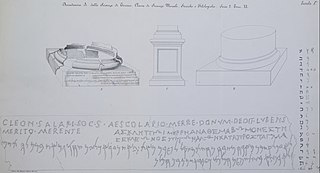
Sardinian or Sard is a Romance language spoken by the Sardinians on the Western Mediterranean island of Sardinia.

Carlo Fea was an Italian archaeologist.
Mario Torelli was an Italian scholar of Italic archaeology and the culture of the Etruscans. He taught at the University of Perugia.

Frabosa Sottana is a comune (municipality) in the Province of Cuneo in the Italian region Piedmont, located about 90 kilometres (56 mi) south of Turin and about 20 kilometres (12 mi) southeast of Cuneo. The economy is based on winter tourism, based on the nearby ski resort of Prato Nevoso.

Cristian Savani is an Italian volleyball player, a member of Italy men's national volleyball team in 2001–2013 and Italian club BluVolley Verona, a medalist of the Olympic Games, 2012 Italian Champion, double Chinese Champion.

Nostra Segnora de Mesumundu is a religious building in the territory of Siligo, Sardinia, Italy.

The Perfect Fusion was the 1847 act of the Savoyard king Charles Albert of Sardinia which abolished the administrative differences between the mainland states and the island of Sardinia within the Kingdom of Sardinia, in a fashion similar to the Nueva Planta decrees between the Crown of Castile and the realms of the Crown of Aragon between 1707 and 1716 and the Acts of Union between Great Britain and Ireland in 1800.

The Cippi of Melqart are a pair of Phoenician marble cippi that were unearthed in Malta under undocumented circumstances and dated to the 2nd century BC. These are votive offerings to the god Melqart, and are inscribed in two languages, Ancient Greek and Phoenician, and in the two corresponding scripts, the Greek and the Phoenician alphabet. They were discovered in the late 17th century, and the identification of their inscription in a letter dated 1694 made them the first Phoenician writing to be identified and published in modern times. Because they present essentially the same text, the cippi provided the key to the modern understanding of the Phoenician language. In 1758, the French scholar Jean-Jacques Barthélémy relied on their inscription, which used 17 of the 22 letters of the Phoenician alphabet, to decipher the unknown language.

Andreas Musalus was a Greek professor of mathematics, philosopher and architectural theorist who was largely active in Venice during the 17th-century Italian Renaissance.
Maurizio Trifone is an Italian linguist and lexicographer.

Geronimo Gerardi (1595-1648) was a Flemish artist active in Italy. He was born Guilliam Walsgart or Hyeronimus Gerards.

The Baths of the Rotonda are the remains of one of several Roman public baths in the city of Catania, Sicily. Built between the 1st and 2nd century CE, they are not far from the Roman theatre and the odeon. In the Byzantine era, the church of Santa Maria della Rotonda with its characteristic dome was built upon the remains of the Roman baths. Its walls are still covered in medieval and baroque frescoes.

Pietro Mattia Stancovich or Petar Matija Stanković was a priest, historian and inventor, born in Istria.

The Pauli Gerrei trilingual inscription is a trilingual Greek-Latin-Phoenician inscription on the base of a bronze column found in San Nicolò Gerrei in Sardinia in 1861. The stele was discovered by a notary named Michele Cappai, on the right side of the Strada statale 387 del Gerrei that descends towards Ballao.

Ignazio Paternò Castello, Prince of Biscari was an Italian polymath, antiquarian, and patron of the arts, who lived most of his life in his native Catania in Sicily.

Florentia was a Roman city in the Arno valley from which Florence originated. According to tradition, it was built by the legions of Gaius Julius Caesar in 59 BC; however, the prevailing hypothesis dates the foundation of the city to the Augustan period.

The Bashamem inscription or Baalshamam inscription is a Phoenician language inscription found in Cagliari, Sardinia in 1877. It is currently in the Museo Archeologico Nazionale di Cagliari.
Francesco Cesare Casula is a Sardinian historian from Italy.

The Olbia pedestal is a Punic language inscription from the [third] century BCE, found 1911 at Olbia in Sardinia.
This page is based on this
Wikipedia article Text is available under the
CC BY-SA 4.0 license; additional terms may apply.
Images, videos and audio are available under their respective licenses.
















